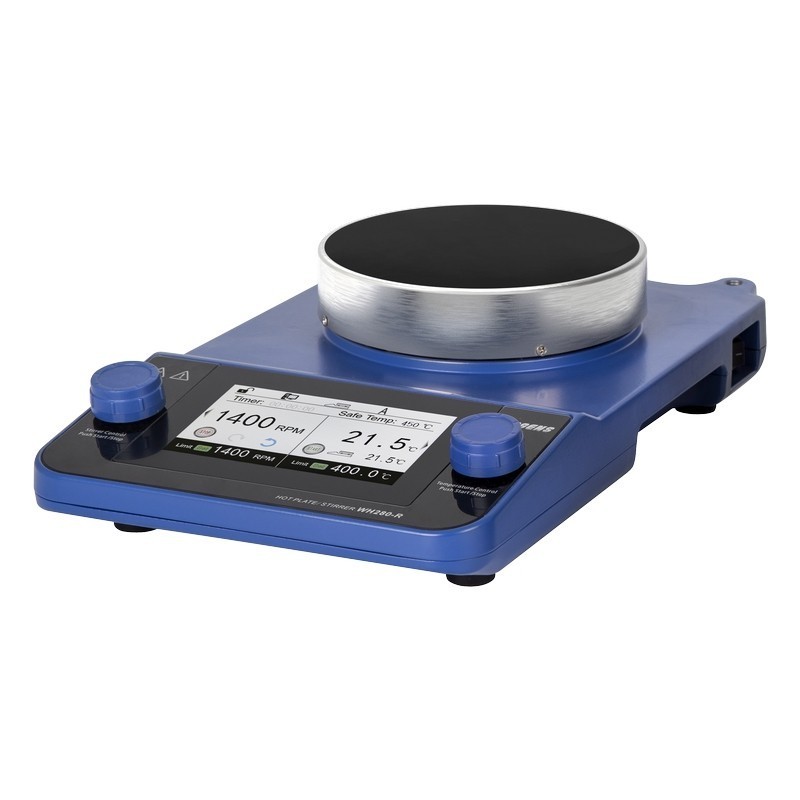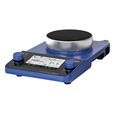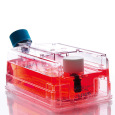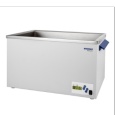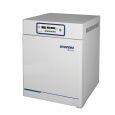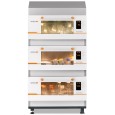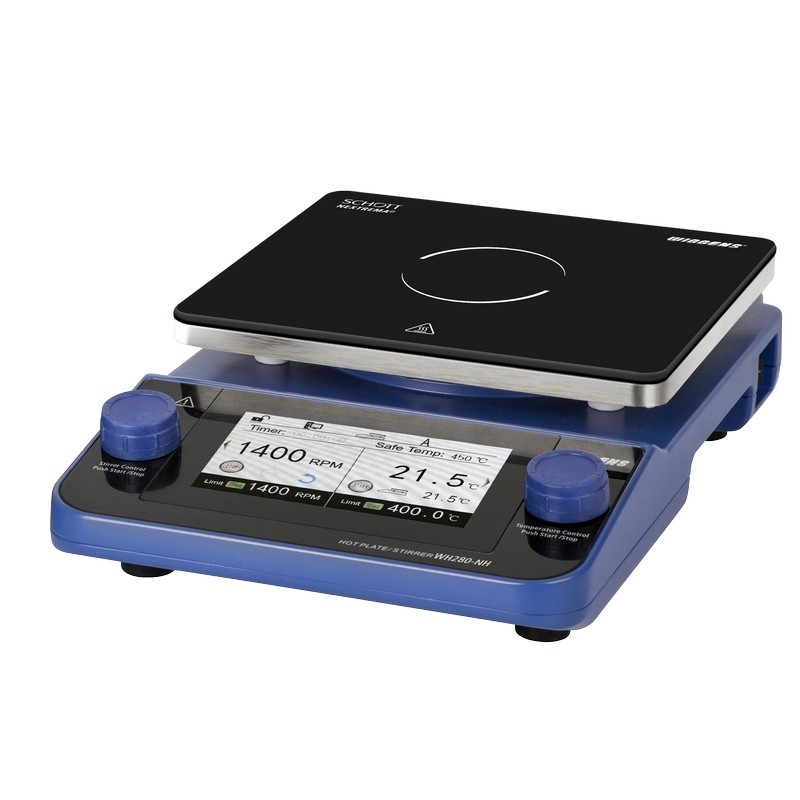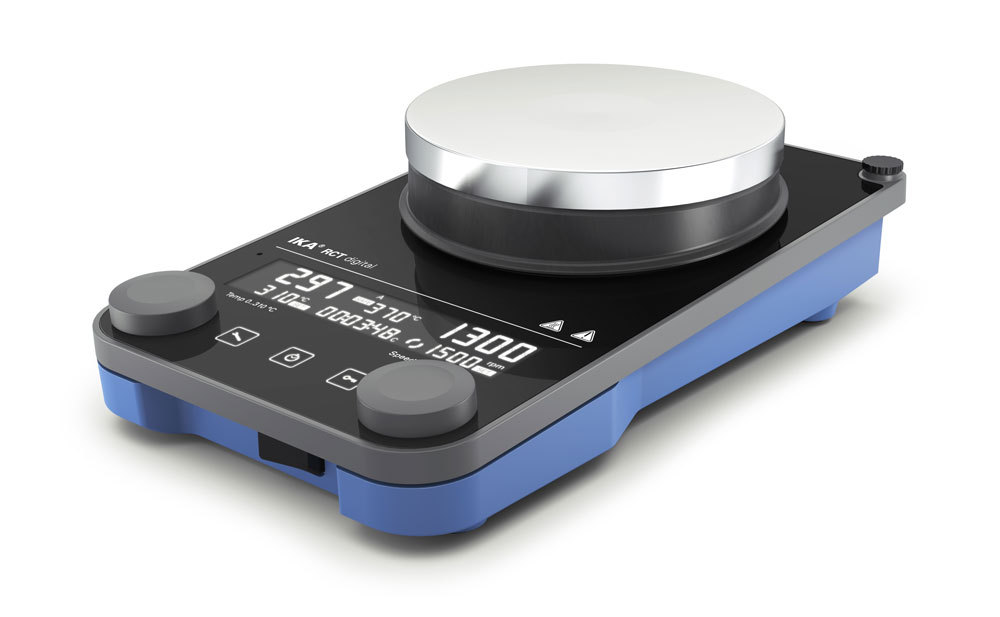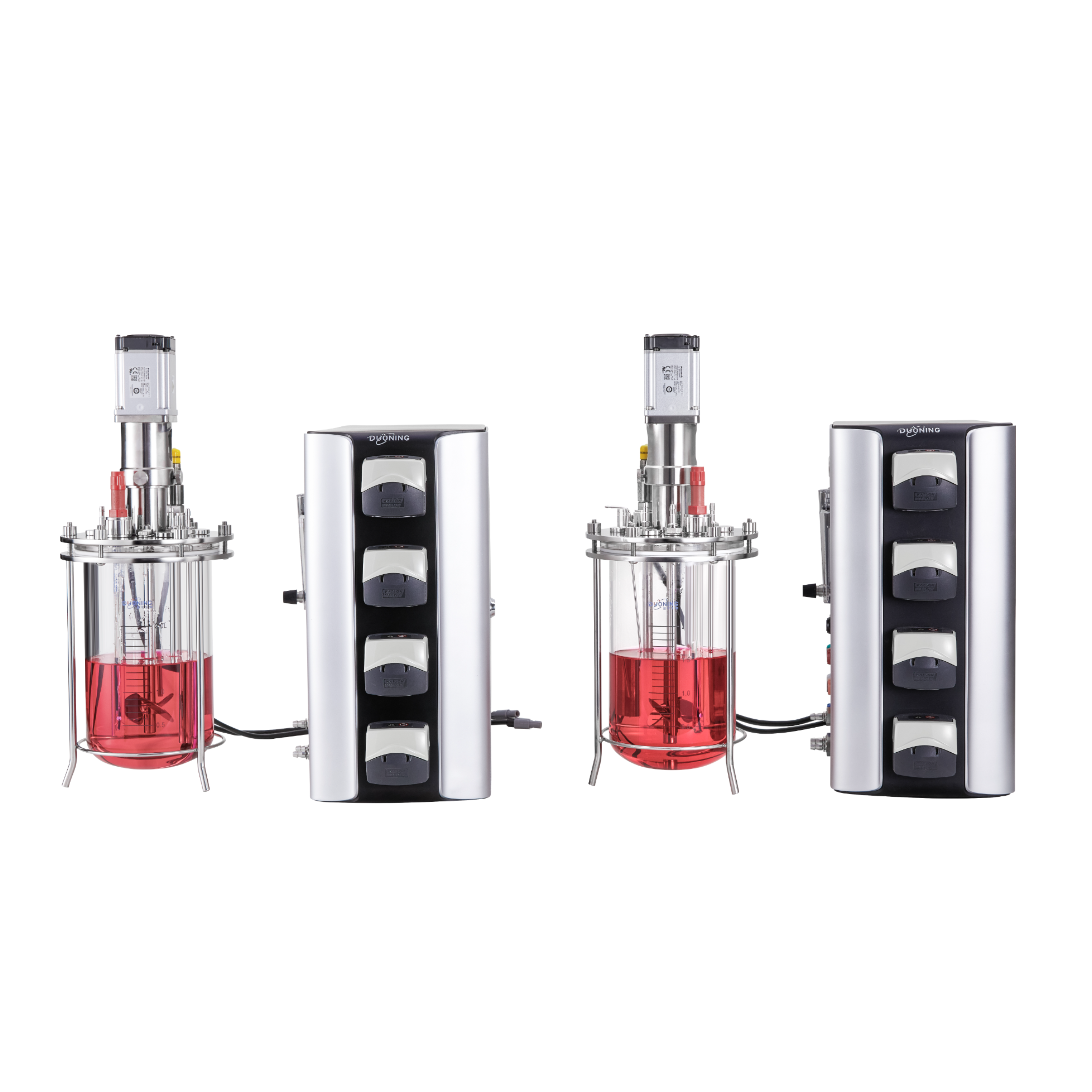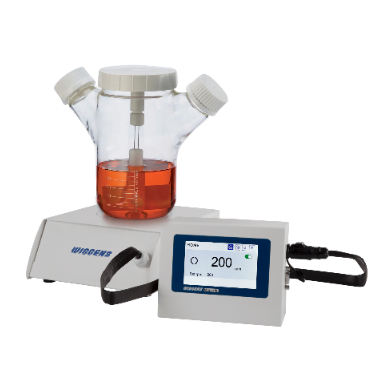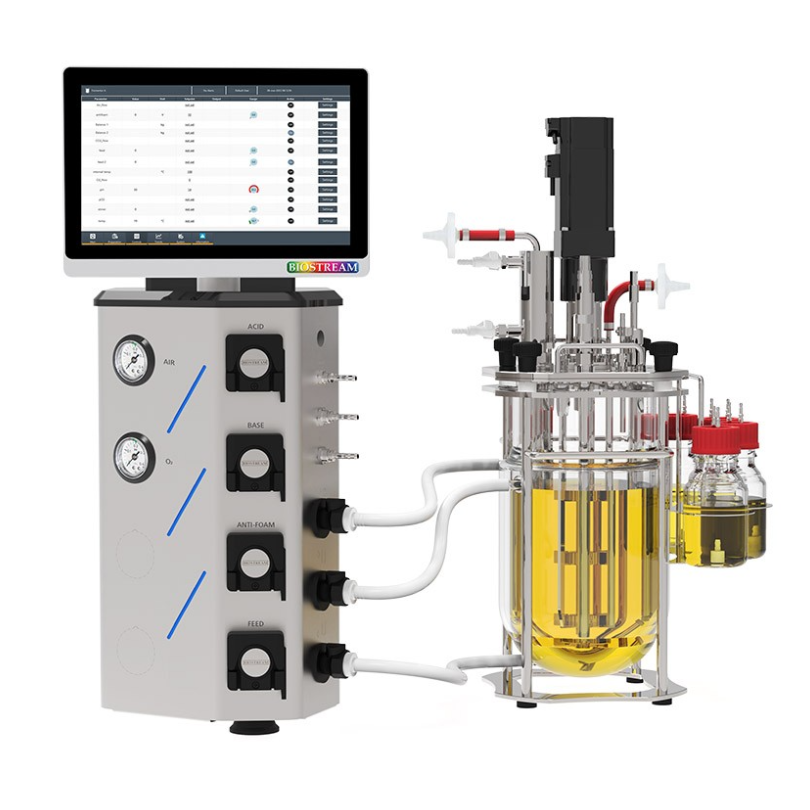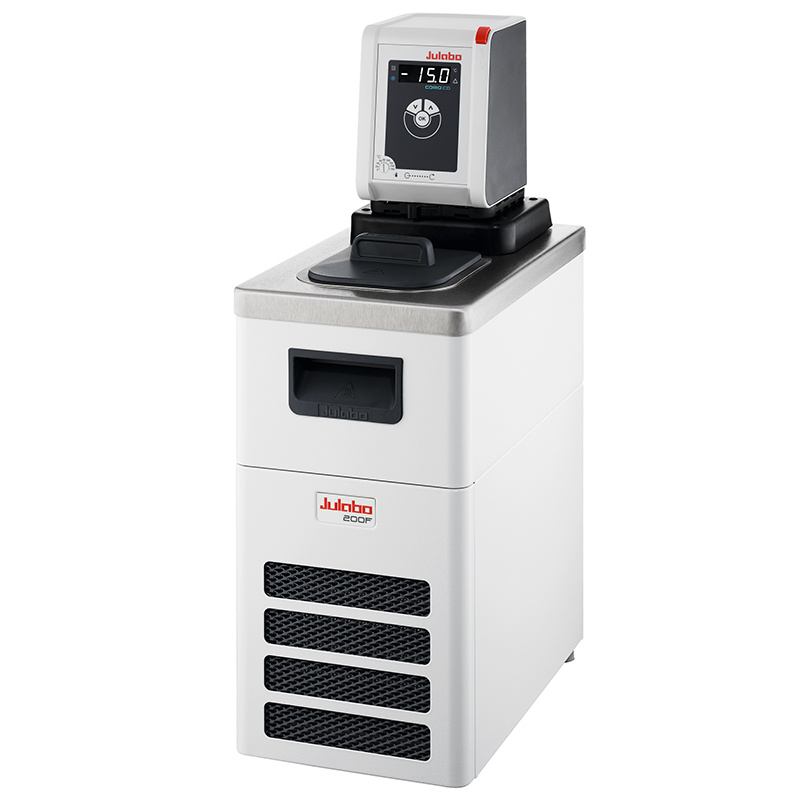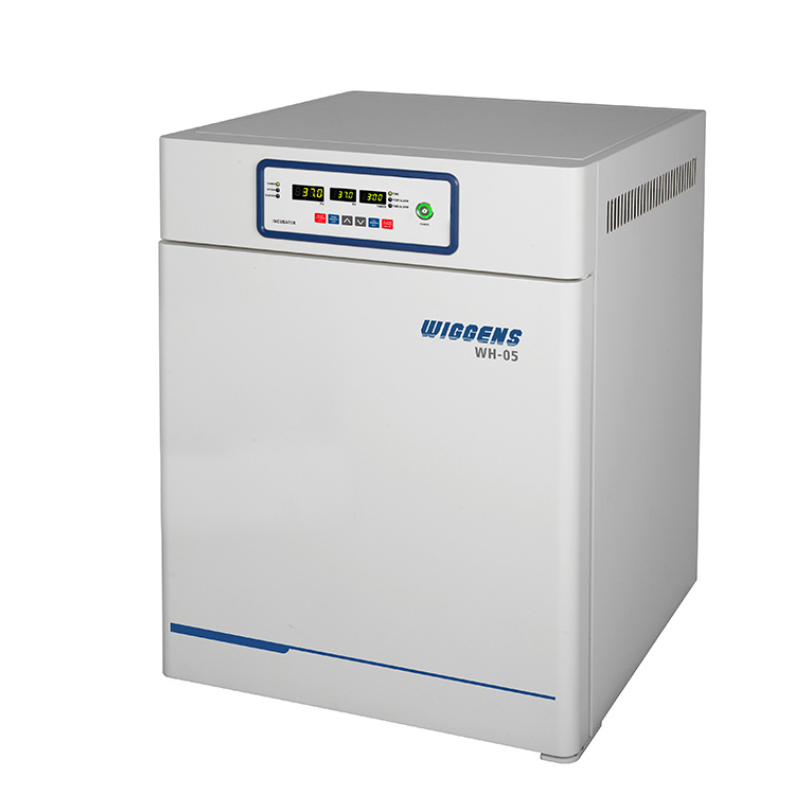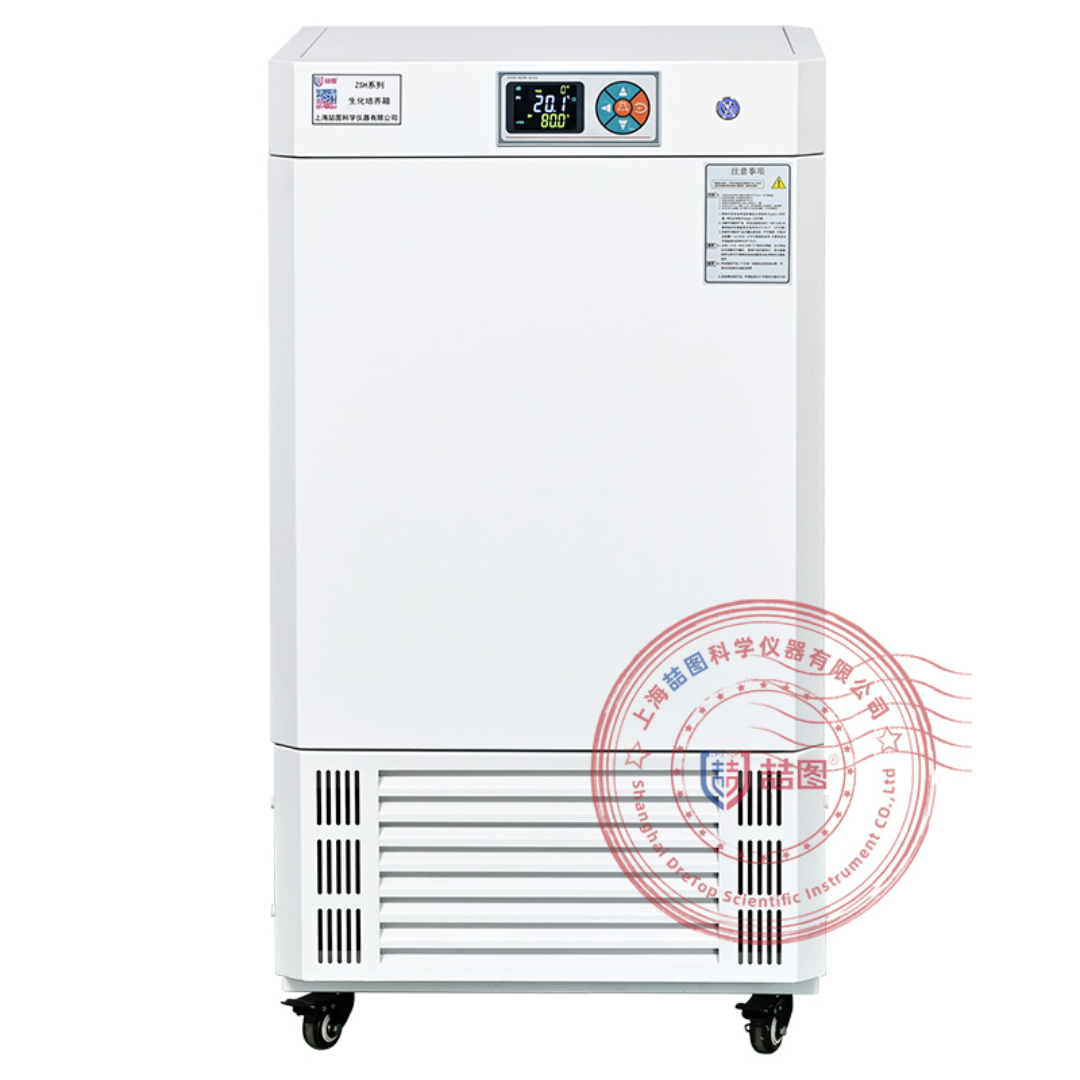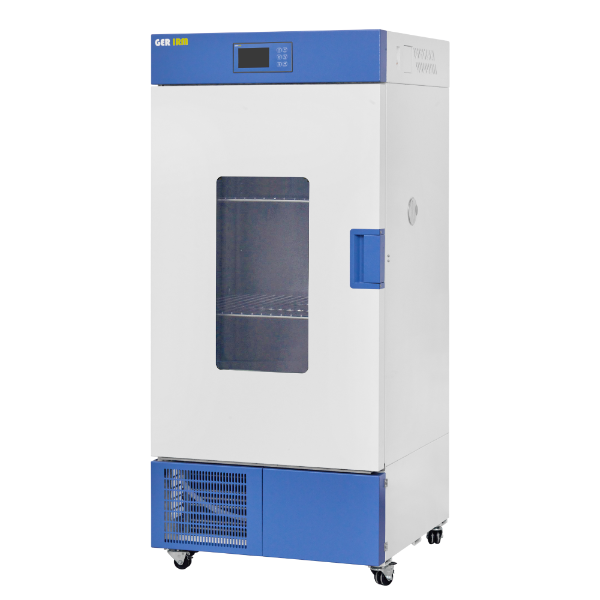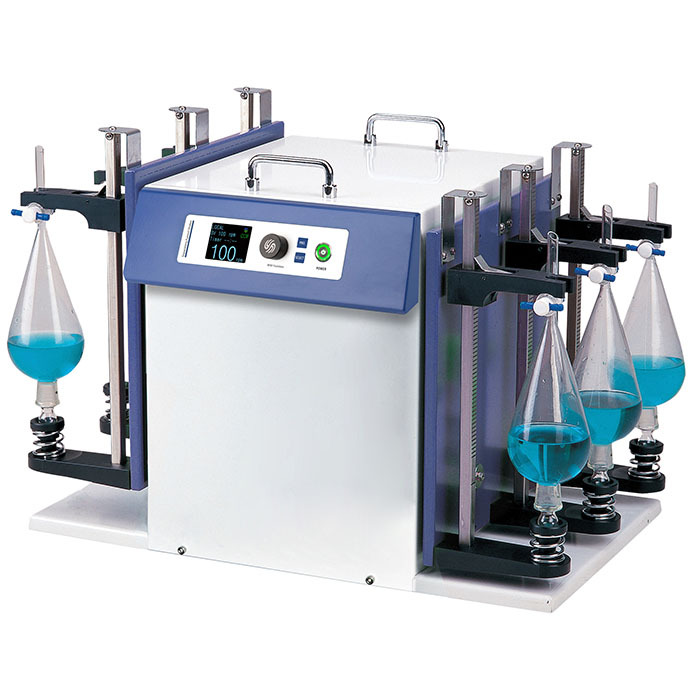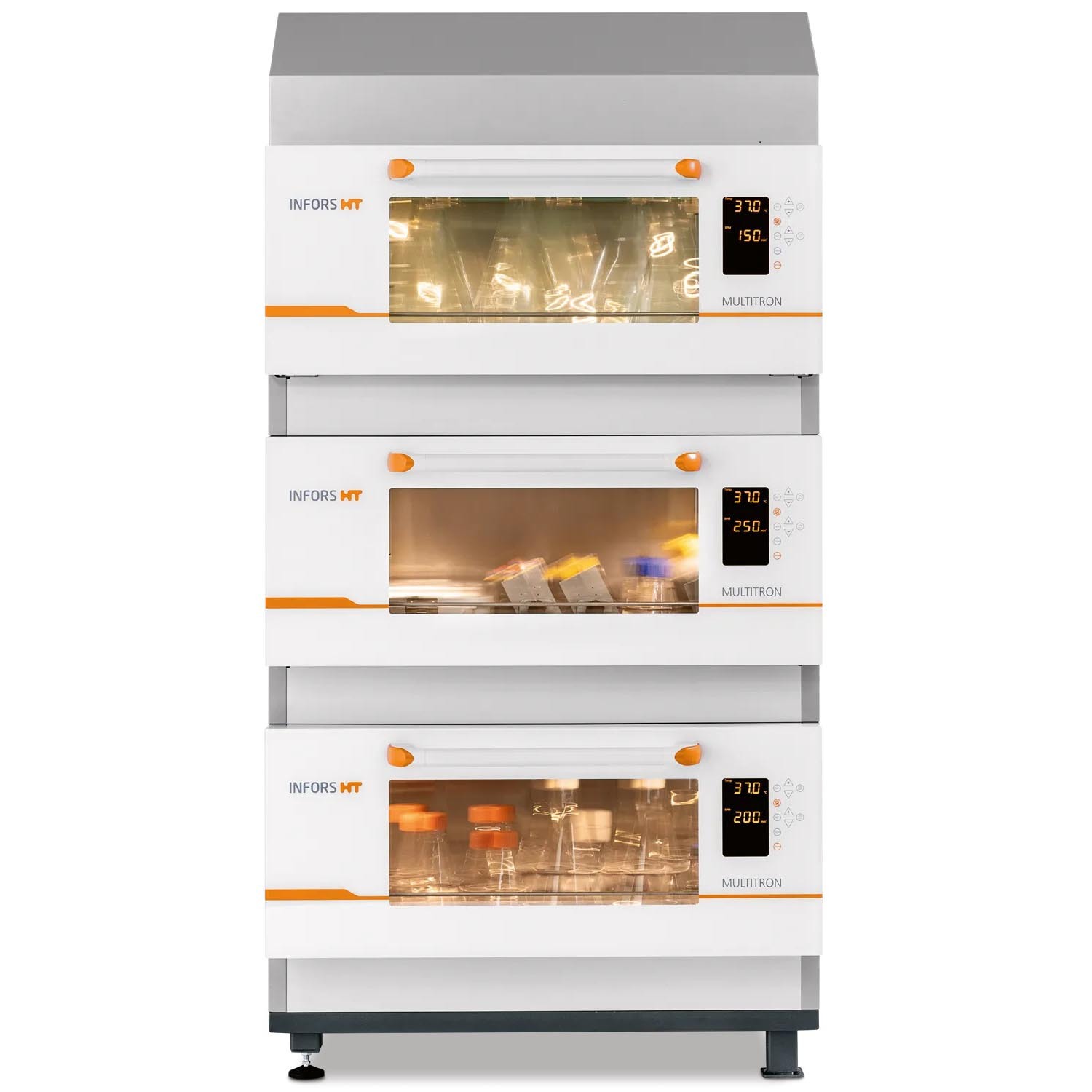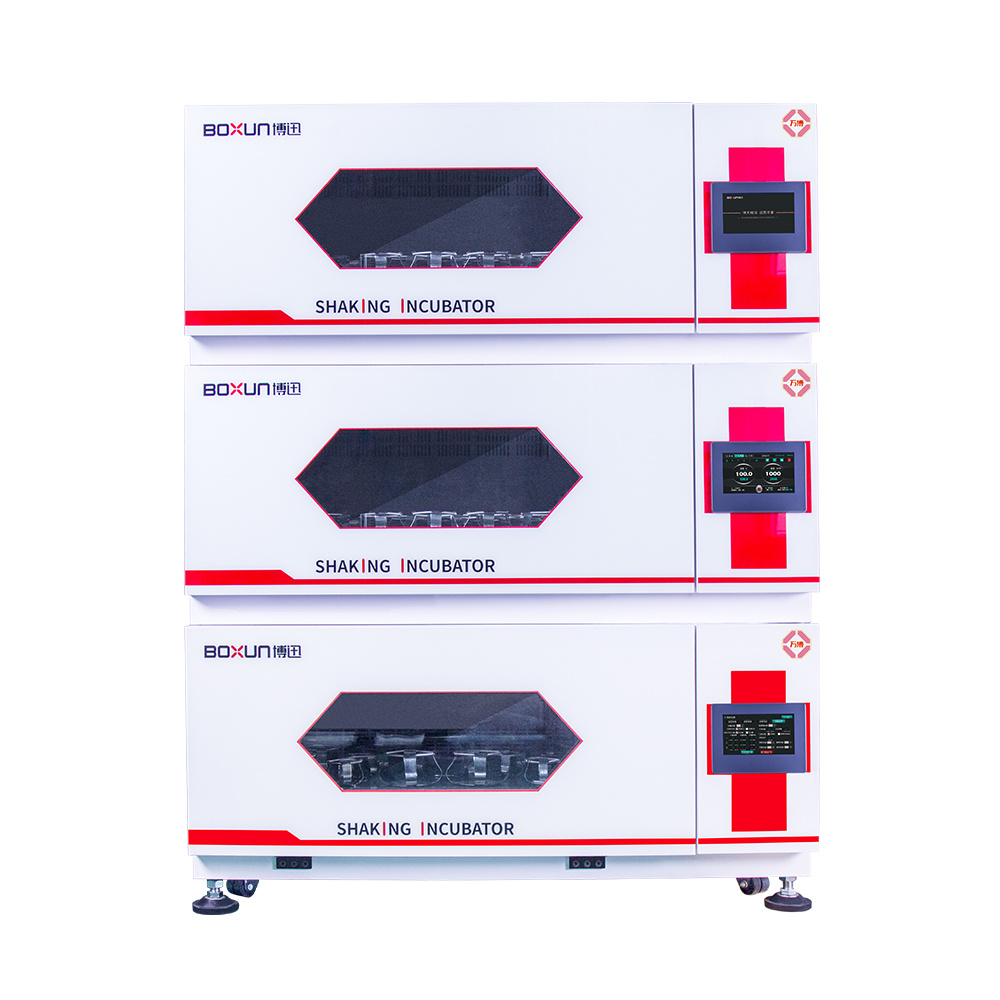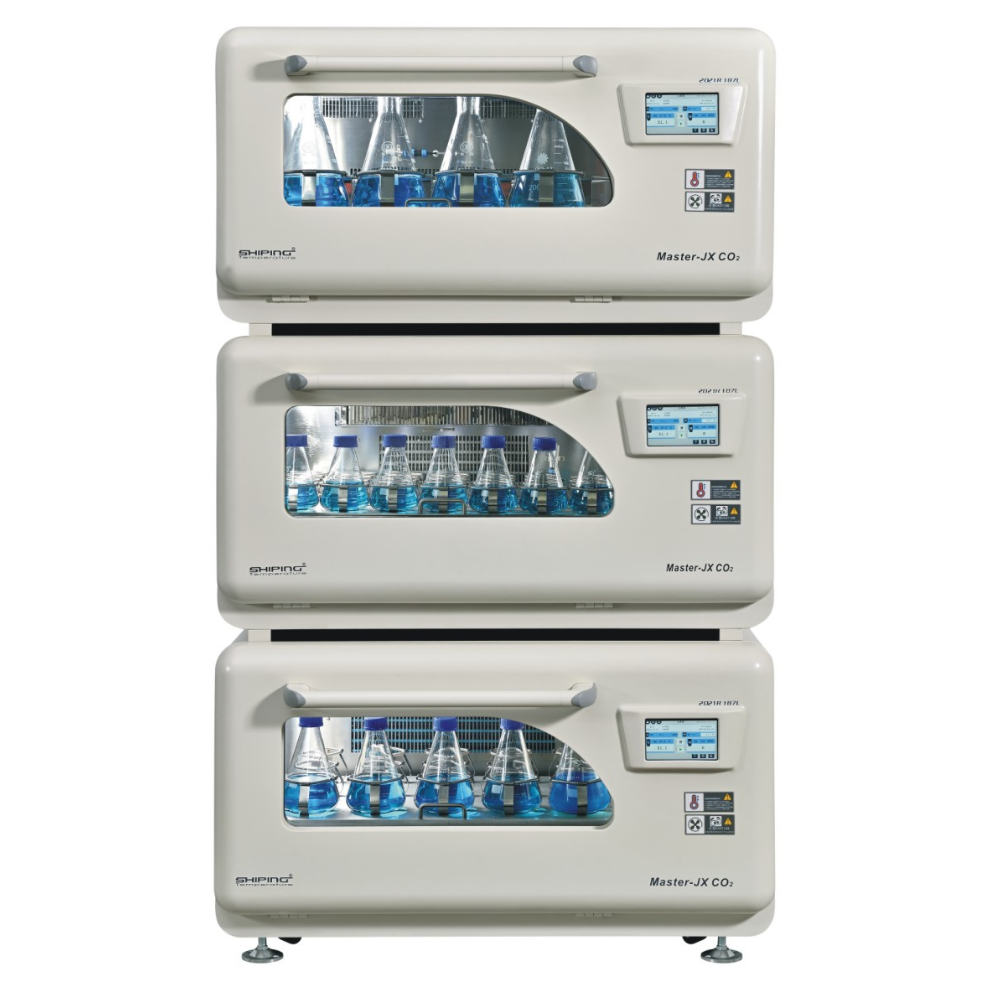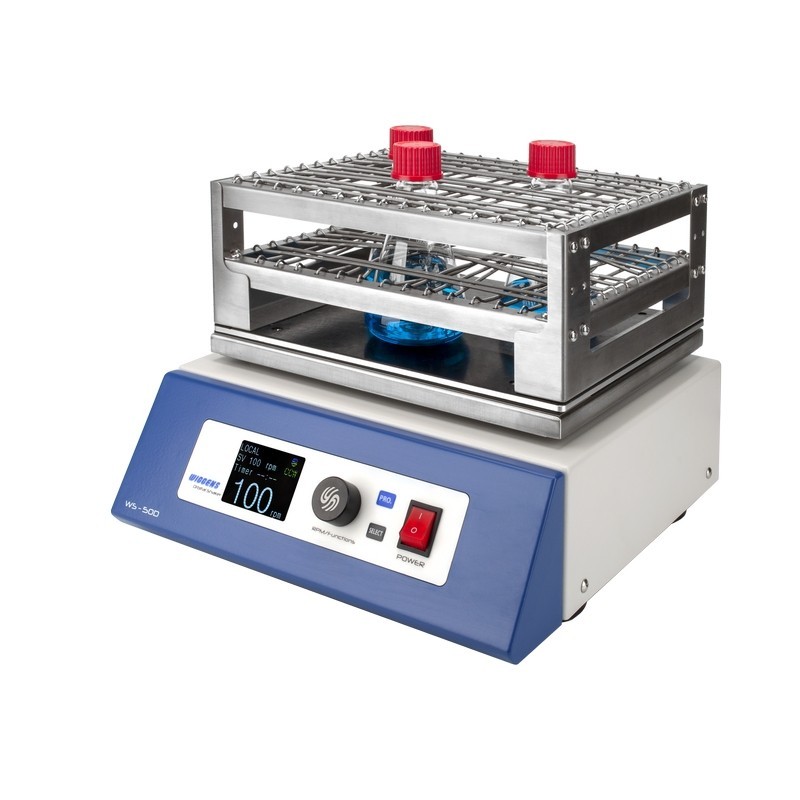方案详情
文
Fermenter System for E. coli culture.
The fermenter is supplied in a configuration to provide an excellent bioreactor for this purpose.
方案详情

Fermenter System for E. coli culture. The fermenter is supplied in a configuration to provide an excellent bioreactor for this purpose. Powerful, top drive system with lubricated mechanical seal (magnetic, bottom drive on Multifors) Water jacketed system for efficient cooling or dry heating for higher maximum temperatures. High-accuracy pumps for addition of pH control reagents, antifoam and feed (option on some units) Control of dissolved oxygen by stirrer speed as standard (air flow and oxygen supplement options) Optional analogue feed pump for variable speed additon Analogue input/output for addition of external pumpsand sensros for eg. OD Vessels: All vessels are boro-silicate glass, round-bottomed with a stainless steel (1.4435) top plate in five standard sizes. Temperature control can be by water circulation or heater block or silicone pad and cold finger. All vessels are with a mechanical seal drive (magnetic for Multifors). The drive shaft has a simple and secure connection for the motor. The top plate is equipped with 10mm, PG13.5 and standard, rounded -thread 19mm ports which can be fitted with a septum and retaining collar to allow flaming of the port during inoculation etc. (number and type varies according to specific fermenter). The vessel is sterilized along with the reagent bottles in an autoclave or sterilized in situ (Techfors S). For better handling, a stainless steel holder is available for hanging the reagent bottles on the side of the culture vessel for autoclavable systems. Stirring The fermenter has a powerful brushless motor with integral speed controller for speeds from 100 - 1500 rpm, depending on the vessel size and number of impellors. A high torque motor is available. x-DDC Control System: All fermenter models except Minifors incorporate the x-DDC (eXtended DDC microprocessor control) which uses a high-performance digital system. With the use of almost identical instrumentation, the step from Bench-scale to larger equipment is made considerably easier. The control panel is compact and is usually mounted above the base unit for clear visibility. The panel can be removed if required. Programming of parameters is via a splashproof keypad with a rotary knob for navigation and an LCD display. Communication is via a robust data-cable. For each fermenter, process information such as parameter set points, PID values etc are stored automatically on an interchangeable "memory card" . This allows changes in fermentation processes by fitting an alternative card or downloading a recipe without re-programming and the chance of errors plus an unlimited number of recipes to be stored. An "open frame" gas supply system with four magnetic valves allow addition of components for automatic mixing of gasses for oxygen supplementation. An optional mass flow control valve ensures a controlled, steady flow of gas into the vessel. Agitation & temperature control. Four high-accuracy digital peristaltic pumps supplied as standard with the option to add an integral analogue feed pump. Addition and removal of liquids is therefore possible with a standard system (using the antifoam pump for medium take-off). Accepts a conductive probe for automatic control of antifoam addition or media addition/removal in a vessel. Works together with the integral peristaltic pumps. Minifors has a simpler, integrated control system based on the same operating panel as the Mulittron incubator shakers. This allows easy changing of set points, calibration and controller options in a way familiar to anyone moving from shake flask to fermentation. It can operatre with IRIS software in exactly the same way as other units and comes with IRIS Light and a data cable included in the basic package. Set points and control strategies Set points are entered into the controller prior to inoculation and stored on a memory card (except Minifors). The vessel was allowed to equilibrate prior to inoculation. The pO2 actual value may stay above the set point up to (and some times after) inoculation. Temperature 30-40°C (depending on precise application and strain) pH 6.8-7.0 DO 30-50% Agitation 300 - 1000+ rpm O2 Optional supplementation of the air stream using a magnetic valve (rotameter) PH Control The pH probe is calibrated prior to the autoclave cycle (refer to Instruction Manual). pH control parameters are: Base 28% v/v ammonia water Acid If required, 4M H2SO4 Transfer tubing Narrow bore silicone tubing with Marprene insert, as supplied (4mm OD) Vessel inlet 4mm fixed pipes in the vessel top plate PID values: factory default setting should be used unless it is clear adjustment is needed (hunt or drift). Dissolved Oxygen (pO2) Control The dissolved oxygen electrode 100% is normally calibrated after the autoclave cycle (refer to Instruction Manual) but can be calibrated in air beforehand for cell culture applications. Control of pO2 can be cascaded eg rpm, airflow, gasmix. The controller automatically maintains the pO2 setpoint. The gas flow rate should be set at a fairly low rate initially eg. 0.3 vessel volumes per minute (VVM) and raised incrementally during the fermentation to 1-1.5VVM whenever the stirrer cannot maintain the correct pO2 value (usually required within an hour or so). This low gas flow rate initially is CRITICAL for some coli strains, especially if genetically modified Fed-batch/Continuous Feed Feed pumps can be calibrated using the standard tubing to keep track of the liquid quantities entering and exiting the vessel. Either a digital pump with shot and delay dosing or an analogue, continuously-variable pump can be used for medium addition. Samples should be taken several times a day to measure glucose concentration and cell density (eg Optical Density at 600nm). Iris v5 software can be used to control nutrient addition. Fed-batch does not involve removal of liquid. Feeding can be related to dissolved oxygen concentration by using software control sequences. Foam Control This can be achieved by adding a small quantity of antifoam into the medium before inoculation (eg. 0.005 -0.01%) and subsequently controlled by a liquid antifoam delivered on demand into the vessel (or at regular time intervals). An antifoam probe uses conductivity to detect the presence of foam. The clear sheathing around the probe should not be damaged or false positive readings will occur. Suitable antifoams are available from a number of companies, including Sigma. Eg A240. Example methodology Medium LB medium plus glucose and other supplements. A suitable strain for test purposes would be K12 as it is readily available from commercial suppliers. Use of antifoam in the medium can help suppress foaming. Supplements are filter sterilized and added after sterilization of the bulk medium in the vessel (10% loss of volume is typically experienced during the sterilization process; allow for this). Inoculum Prepared in an Infors shaker (Minitron or Multitron) from an overnight culture of a few colonies picked from an agar plate and inoculated into in 250ml shake flasks containing 50ml of medium. Shaker speed is 200rpm and a temperature 30oC. Use one of these to inoculate the fermenter for every 950ml of complete medium i.e. 5% inoculum. Method Electrodes should have been calibrated before autoclaving (pH and zero point pO2). • Sterilize the vessel with the basic medium. Adjust for evaporation losses, if necessary. • Allow to cool to operating conditions and then calibrate pO2 100% value. • Add any supplements then inoculate using a syringe or transfer line. Take a To sample for pH, optical density and carbon-source concentration measurement. Direct cell counts can be made and cells plated to check purity and measure viability. Dry weight values can be related to optical density readings and total/viable counts as required. Sample at eg. 1 hour intervals to follow the process. After approximately 2-3 hours strong logarithmic growth should occur with substrate depletion typically within 8 hours, unless fed-batch or continuous operation is implemented. Optical density values should increase quickly and level off when exponential growth has finished. The end of active growth may also be marked by a rise in the dissolved oxygen concentration/decrease in stirrer speed. High-density culture may need oxygen supplementation and glucose feeding. the probe should not be damaged or false positive readings will occur. Fermenter System for E. coli culture. The fermenter is supplied in a configuration to provide an excellent bioreactor for this purpose.
确定
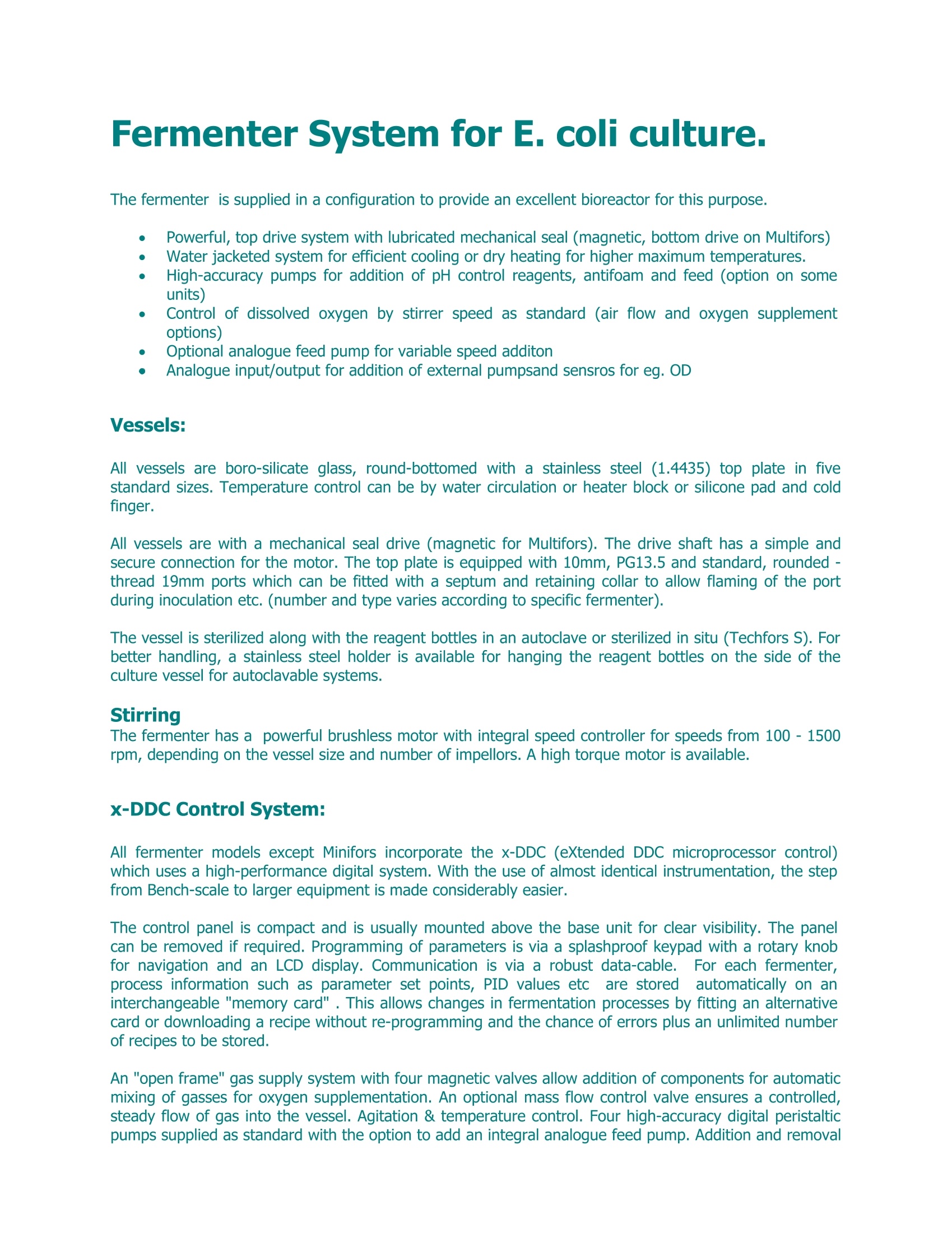

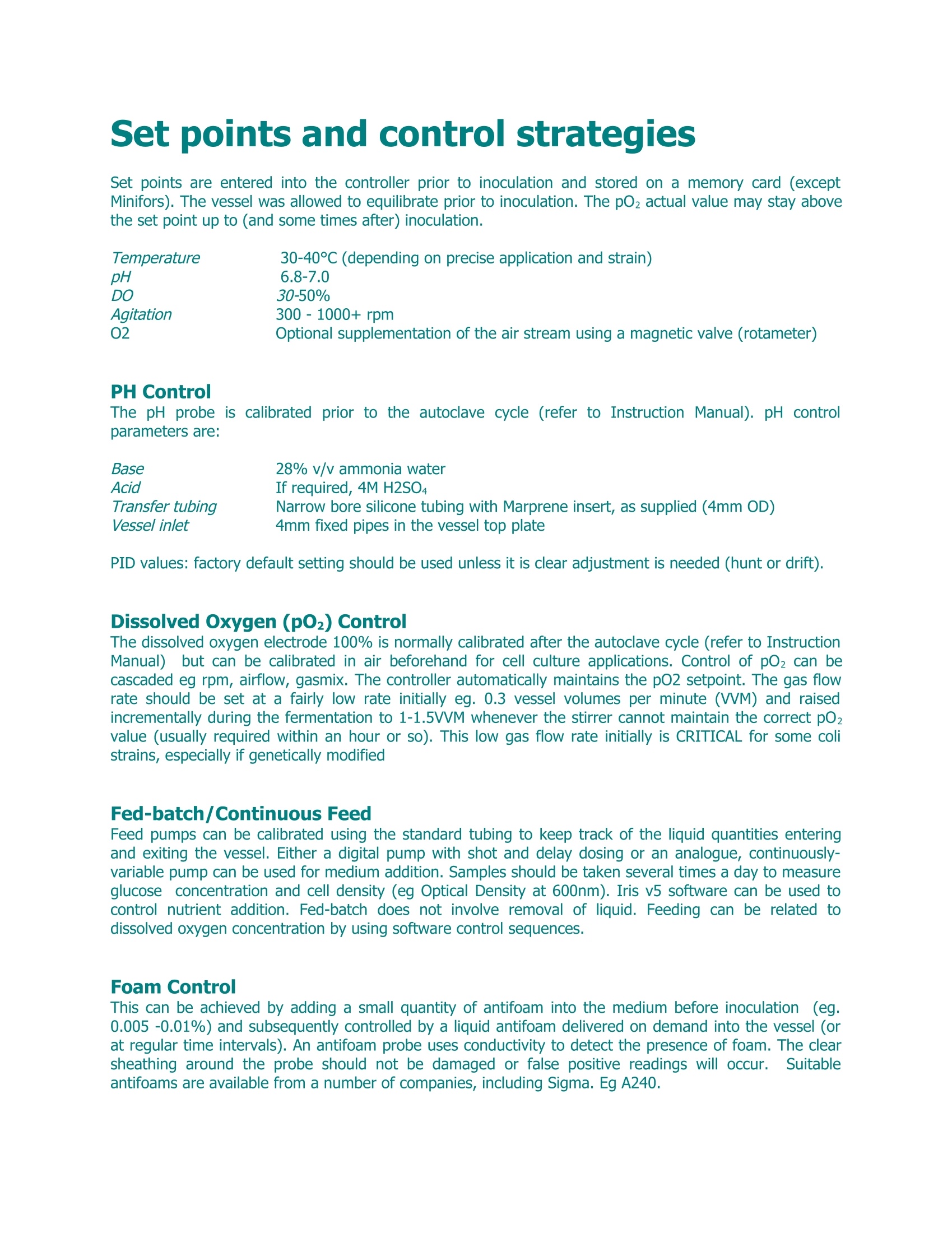
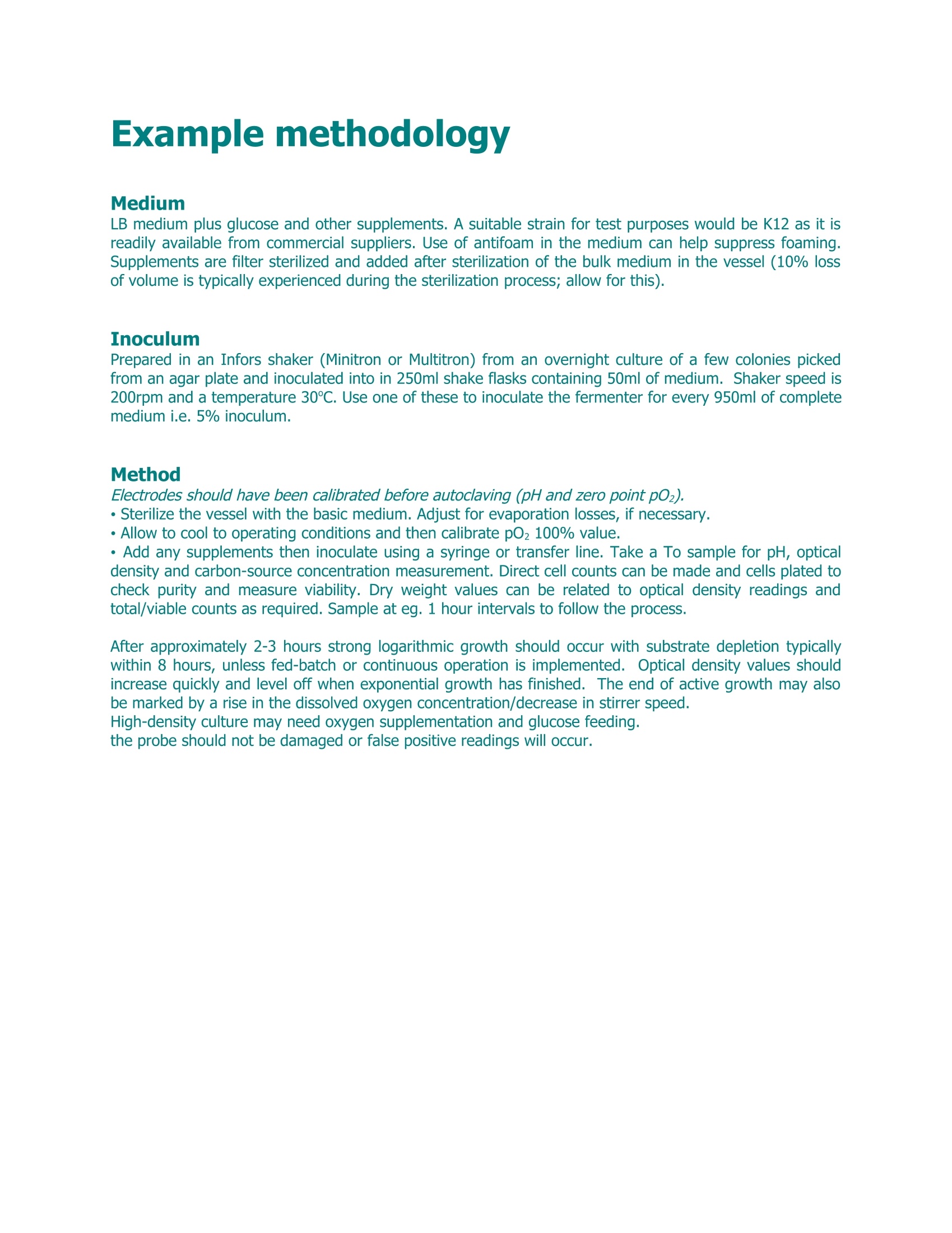
还剩2页未读,是否继续阅读?
维根技术(北京)有限公司(WIGGENS)为您提供《大肠杆菌中培养方法检测方案(搅拌器)》,该方案主要用于生物发酵中培养方法检测,参考标准--,《大肠杆菌中培养方法检测方案(搅拌器)》用到的仪器有WIGGENS WH280-R加热磁力搅拌器、 WHEATON CELLine 生物反应器、WIGGENS WA20通用水浴槽、WIGGENS WH-10P Pro 系列低温培养箱、INFORS Multitron Cell多功能振荡培养箱
相关方案
更多
该厂商其他方案
更多

